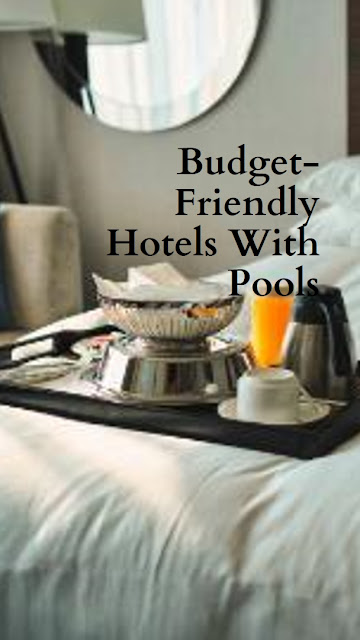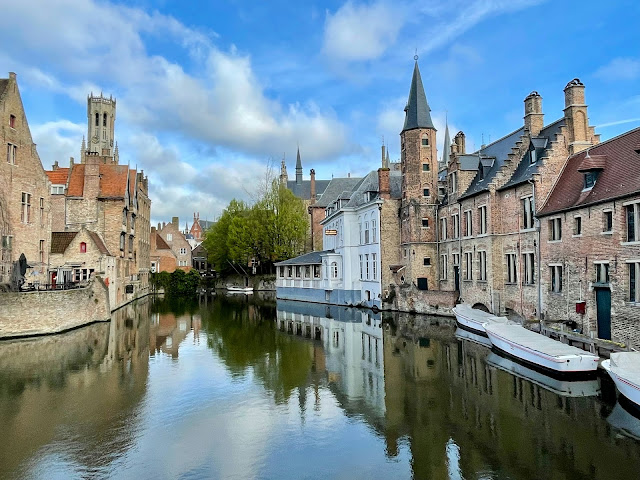Discovering Bologna: A Guide to History, Culture and Gastronomy
If you are looking for a city that combines history, culture and gastronomy, Bologna is a great choice. Bologna is the capital of the Emilia-Romagna region in northern Italy, and it has a lot to offer to visitors of all tastes and interests.
Here are some of the things you can do in Bologna
Stop by the Piazza Maggiore, the main square of the city, where you can admire the impressive buildings such as the Palazzo d'Accursio, the Palazzo del Podesta, the Basilica di San Petronio and the Fountain of Neptune. This is also a great place to enjoy a coffee or a meal at one of the many cafes and restaurants under the porticos.
Climb the Asinelli Tower, one of the two leaning towers of Bologna, for an incredible view of the city and its surroundings. The tower is 97 meters high and has 498 steps, so be prepared for a challenge. You can also see the Garisenda Tower, which is shorter but more tilted than its sister tower.
Stroll down Via Drapperie and admire the food shops and restaurants that showcase the culinary delights of Bologna. You can find everything from fresh pasta, cheese, meat, bread, pastries and wine. Don't miss the Quadrilatero, the oldest market area in the city, where you can taste some of the local specialties such as tortellini, mortadella and ragu.
Visit San Petronio's Terrace for great views of Bologna that also feature its famous towers. You can access the terrace from inside the Basilica di San Petronio, which is one of the largest churches in the world and has a stunning interior with frescoes, sculptures and chapels.
Eat your heart out at one of the many restaurants that serve authentic Bolognese cuisine. You can try dishes such as tagliatelle al ragu, lasagna, cotoletta alla bolognese, piadina and gelato. You can also join a cooking class or a food tour to learn more about the secrets of Bolognese gastronomy.
Hunt down the hidden canals of Bologna, which date back to the 12th century and were used for transportation, irrigation and defense. You can find some of them under bridges or through windows, such as the Canal di Reno, the Canal delle Moline and the Canal di Navile.
Take a day trip (or four) outside the city to explore some of the nearby attractions. You can visit Dozza, a colorful hill town with murals and a castle; Modena, a UNESCO World Heritage Site famous for its balsamic vinegar and Ferrari museum; Parma, another culinary hotspot with cheese and ham factories; or Ravenna, a city with stunning mosaics and monuments.
Visit the Archiginnasio, a historic building that was once the main building of the University of Bologna. It now houses the Anatomical Theatre, the Library of Medicine and the Museum of Palazzo Poggi.
Explore the Santo Stefano complex, a group of seven churches that are collectively known as the "Seven Churches". The complex is one of the oldest in Bologna and has a fascinating history and architecture.
Check out the Museo Civico Archeologico, which houses a collection of Etruscan, Roman and Greek artifacts. The museum is located in the Palazzo Galvani, a beautiful Renaissance palace.
Take a stroll through the Giardini Margherita, a large park in Bologna that's perfect for picnics, jogging or just relaxing in nature. The park has several walking paths, playgrounds and cafes.
Attend a performance at the Teatro Comunale di Bologna, a historic opera house that dates back to 1763. The theater has hosted some of the most famous composers and performers in history, including Rossini, Verdi and Pavarotti.
Visit the Museo Morandi, which showcases the work of Giorgio Morandi, one of the most important Italian painters of the 20th century. The museum has a large collection of Morandi's still-life paintings and drawings.
Take a guided tour of the underground canals of Bologna, which were used for centuries to transport water and goods throughout the city. The tour takes you through narrow tunnels and hidden chambers that are not normally accessible to the public.
These are just a few of the many things you can do in Bologna. Whether you're interested in history, art, food or just enjoying the beautiful architecture and atmosphere of the city, Bologna has something for everyone.
What is the most famous dish from Bologna?
The most famous dish from Bologna is probably "tagliatelle al ragù", also known as "tagliatelle alla Bolognese". This is a pasta dish made with long, flat noodles called tagliatelle and a meat-based sauce called ragù.
The sauce typically includes ground beef or pork, onions, carrots, celery, tomato paste, red wine, and sometimes milk or cream. It's a hearty and flavorful dish that's enjoyed all over Italy and around the world.
Other famous dishes from Bologna include "lasagna alla Bolognese" (a baked pasta dish made with layers of noodles, ragù, and bechamel sauce) and "tortellini in brodo" (small, stuffed pasta served in a clear broth).
Why do people go to Bologna Italy?
History and Culture: Bologna is a city with a rich history and culture that dates back thousands of years. Visitors can explore historic landmarks such as Piazza Maggiore, San Petronio Basilica, and the Two Towers.
Gastronomy: Bologna is known for its delicious cuisine, including dishes like tagliatelle al ragù and tortellini in brodo. Foodies flock to Bologna to sample the local specialties and take cooking classes.
Architecture: Bologna has a beautiful mix of medieval, Renaissance, and Baroque architecture, with stunning buildings and monuments around every corner.
Shopping: Bologna is home to many traditional shops selling handmade goods, artisanal products, and designer fashion. The Quadrilatero district is particularly popular for shopping.
Education: Bologna is one of the oldest university cities in Europe, dating back to the 11th century. Today, it's still a hub of intellectual activity and attracts students from all over the world.
What is the famous street in Bologna?
One of the most famous streets in Bologna is Via dell'Indipendenza. This pedestrian street stretches from Piazza Maggiore to the train station and is lined with shops, cafes, restaurants, and historic landmarks.
It's a popular spot for locals and tourists alike, and it's always bustling with activity. Via dell'Indipendenza is also known for its beautiful porticoes, which provide shelter from the sun and rain and create a unique architectural style that's characteristic of Bologna.
Other famous streets in Bologna include Via Rizzoli, which runs parallel to Via dell'Indipendenza and is home to many high-end shops and boutiques, and Strada Maggiore, which leads from Piazza Maggiore to the Basilica di San Domenico and has some charming cafes and antique shops.
Why is Bologna called the Fat city?
Bologna is sometimes referred to as the "Fat City" (la grassa in Italian) because of its rich culinary tradition and delicious cuisine. Bologna has a long history of producing high-quality food products, including cured meats like mortadella and prosciutto, rich cheeses like Parmigiano-Reggiano, and fresh pasta like tagliatelle and tortellini.
In addition to its local specialties, Bologna is also known for its generous portions and hearty dishes, which have earned it a reputation as a city where you can eat well and plentifully. Bolognese cuisine is often made with butter, cream, and other indulgent ingredients, which add to its richness and flavor.
So, while some might see the nickname "Fat City" as a bit tongue-in-cheek, it's really a testament to the city's culinary heritage and its commitment to creating delicious, satisfying dishes that are meant to be savored and enjoyed.
FAQs
What is the best time of year to visit Bologna?
The best time to visit Bologna is during the spring (April to June) and fall (September to November) when the temperatures are mild and the crowds are smaller. The summer months can be very hot and crowded, and many locals go on vacation in August.
Is it easy to get around Bologna without a car?
Yes, Bologna is a very walkable city, with most of the main attractions located within the historic city center. There is also an excellent public transportation system, including buses and trains, that makes it easy to get around the city and the surrounding region.
Can I visit nearby cities like Florence or Venice as a day trip from Bologna?
Yes, it's possible to visit nearby cities like Florence, Venice, and Milan as day trips from Bologna using the train or bus. However, keep in mind that these cities are quite far away, so you'll need to plan your itinerary carefully to make the most of your time.
Is Bologna safe for tourists?
Bologna is generally a very safe city for tourists, with low levels of crime and a friendly, welcoming atmosphere. However, as with any city, it's important to exercise caution and common sense, especially when it comes to pickpockets and other petty theft.
What should I wear when visiting Bologna?
Bologna is a stylish city, and locals tend to dress well. You don't need to dress up all the time, but it's a good idea to avoid wearing shorts and flip-flops, as they're generally considered too casual. Instead, opt for comfortable clothes that are appropriate for the season and a pair of comfortable walking shoes.




Comments
Post a Comment
It's easy to leave a comment on our blog – anyone with a Google account can do it. We invite you to share your experiences by leaving a comment as well.